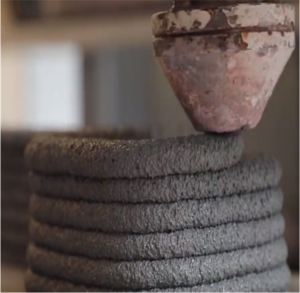Sustainability
Printable and Sustainable Concrete
________________________________________
Problem Statement
- Concrete material results in high CO2 emission
Cement is one of the major sources of greenhouse gases and it is estimated that each tonne of Portland cement releases 1 tonne of CO2.
- Increasing plastic waste in Singapore
According to the statistics generated by National Environment agency (NEA), in 2017, 815,200 tonnes of plastic was generated and only 6% (49, 000 tonnes) of it was recycled
Objective
The key aim of this project is to develop and commercialise a printable mortar mix that can be printed into sustainable concrete building components.
The main objectives are:
- To produce and study the workability/ flowability, extrudability, buildability, compressive strength, and speed of setting of concrete mix that contains Ground Granulated Blast Furnace Slag (GGBS) and/or waste plastic (namely, Polyethylene Terephthalate (PET))
- To produce, study and optimise the properties of a 3D printed concrete building component.
Key Benefits/ Outcomes
Various formulations of GGBS + PET combos were evaluated.
- GGBS can be used as cementitious mix, which is comparable to conventional cementitious mix that has high compression strength.
- Adding PET to GGBS is not better than GGBS mix. Nonetheless, GGBS + PET mix can be used for different applications e.g. archaeology artifact printing, parts that require less mechanical strength.
- Addition of PET also causes the concrete mix to behave like semi-solid which helps in accelerating the curing for printing.

Viscous concrete mix extruded from the nozzle during the printing process.



